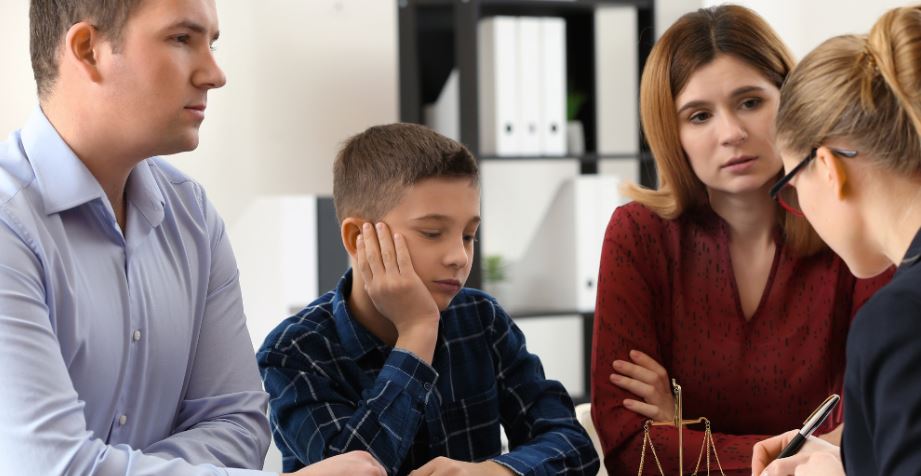Navigating child custody issues can be complex and overwhelming for parents. With evolving laws and shifting societal norms, determining the best custody arrangements for your child is crucial yet challenging. This article offers an in-depth exploration of child custody laws in 2023, providing you with the knowledge necessary to make informed decisions.
- I. Distinguishing Between Physical and Legal Custody
- II. Dynamics of Joint Custody vs. Sole Custody
- III. Managing the Practical Realities of Joint Custody
- IV. Allocating Decision-Making Rights Through Legal Custody
- V. Religion and Child Custody Determinations
- VI. Key Factors to Consider When Pursuing Child Custody Litigation
- Frequently Asked Questions (FAQs)
I. Distinguishing Between Physical and Legal Custody
Child custody determinations involve allocating physical custody and legal custody rights between parents.
Physical custody refers to where the child lives and which parent they reside with. Some common arrangements include:
-
Sole physical custody: The child lives primarily with one parent most of the time.
-
Joint physical custody: Each parent has significant and roughly equal residential time with the child.
-
Split physical custody: Each parent has sole custody of one or more children.
Courts consider factors such as parenting capability, relationships, home environments, distance between parents, and the child’s needs when determining physical custody.
Legal custody pertains to decision-making authority for significant determinations concerning the child’s welfare and upbringing. Areas commonly covered under legal custody include:
-
Education (schooling, extracurricular activities)
-
Healthcare (medical, dental, mental health)
-
Religion
-
Travel
Both sole and joint legal custody arrangements exist. In cases of joint legal custody, parents share equal rights and responsibilities for making significant decisions regarding the child’s well-being. For better clarity and to help finalize any legal decisions, consult with an effective child custody attorney.
Although related, physical and legal custody are distinct, which means that the arrangements may not always align. For example, one parent could have sole physical custody while both share joint legal custody. Understanding this nuance is crucial when dealing with custody matters.
II. Dynamics of Joint Custody vs. Sole Custody
Joint custody entails both parents sharing physical and/or legal custody. This cooperative approach is beneficial for children’s well-being, with improved academic and emotional outcomes. However, joint custody might not be feasible. For example, parents are geographically distant. They can also have high conflict, or have histories of domestic violence. Under such circumstances, courts often award sole physical custody to one parent.
Judicial decisions emphasize parental fitness, the capability to provide stability, and the child’s existing living situation. Behavioral factors like substance abuse and negligence can also impact determinations. Ultimately, the court-appointed custody evaluator will issue recommendations based on an impartial assessment of the child’s best interests.
III. Managing the Practical Realities of Joint Custody
Source: U.S. Census
With over 50% of divorces resulting in joint custody agreements, navigating practical realities is paramount for families. Succeeding with joint physical custody requires strong co-parenting and proximity to allow fluid transitions. For joint legal custody, parents must effectively collaborate on major decisions about education, healthcare, religion, and activities.
Joint custody can enhance children’s experiences but also presents logistical challenges. Parents might struggle with the financial pressures of maintaining two suitable households. The shuffling between homes could also negatively impact some kids despite the co-parenting relationship being strong. Comprehending these multifaceted implications enables one to have realistic expectations. Furthermore, child support payments may become inconsistent depending on the circumstances.
IV. Allocating Decision-Making Rights Through Legal Custody
Legal custody relates to the authority to make significant child-rearing decisions Given most courts award joint legal custody, with over 70% of cases granting decision-making rights to both parents, it’s vital to understand how this dynamic functions.
In joint legal custody, while daily choices are made by the parent during their residential time, major determinations require mutual agreement. If disputes arise, parents must show a meaningful effort toward constructive communication and compromise before resorting to court resolution. Deliberate violations of joint authority could lead to sanctions or changes in custody.
V. Religion and Child Custody Determinations
With religious diversity on the rise, custody conflicts sometimes emerge surrounding faith-based upbringing. Most states approach such disputes through the lens of the child’s interests. Courts avoid favoring one parent’s religious beliefs over another’s and focus on potential harm due to exposure to conflicting doctrines.
In some jurisdictions, judges will uphold agreements made between parents on religious matters. Where no consensus exists, arrangements often involve both parents playing a role in spiritual nurturing. Ultimately, ensuring the child’s well-being based on their needs and stage of development drives judicial determinations.
While ideal custody solutions stem from parental agreements, litigation is sometimes unavoidable despite alternative dispute resolution being mandated in most states. Where conflicts persist and necessitate court intervention, proper preparation becomes essential.
VI. Key Factors to Consider When Pursuing Child Custody Litigation
Entering child custody litigation initiates a taxing process with profound long-term implications. For parents contemplating litigation, prudent consideration of several key factors beforehand is essential:
Securing Experienced Legal Representation
Navigating complex custody lawsuit procedures and state laws requires competent legal counsel. Lawyers offer:
-
Guidance on evidentiary burdens and litigation timelines
-
Courtroom advocacy and negotiation expertise
-
Objective case assessments and strategic advice
Assembling a Strong Case Pre-Trial
Building a robust case involves:
-
Gathering favorable evidence (witnesses, records)
-
Documenting parenting histories
-
Undergoing evaluations by court-ordered experts
-
Attending mediation sessions aimed at settlement
Considering the Child’s Best Interests
Courts only consider the child’s welfare, not parental fairness. Demonstrating commitment to the child above all else, if settlement talks fail, will be valued.
Preparing for Emotional and Financial Tolls
Custody disputes evoke intense emotions. Additionally, litigation costs through trial can exceed $25,000. Assessing realistic burdens allows for better handling of stresses.
With informed preparation guided by legal counsel, parents enhance their chances of achieving fair custody outcomes through the courts.
Custody battles and trials, though ultimately beneficial, can still be a harrowing process. Consider taking breaks and trips after and seeking support from a qualified healthcare professional afterward.
Frequently Asked Questions (FAQs)
How do courts determine the ‘best interests’ of a child in custody cases?
While definitions vary by state, courts generally assess developmental, physical, and emotional needs alongside living environments, family relationships, and parents’ mental/physical health. Judges must issue rulings guided solely by child well-being rather than parental fairness or rights.
Can a child’s preference influence custody decisions?
Most states allow children to express custody preferences from a specific age, often starting from 12 years onwards. While judges consider preferences, they aren’t determinative, especially for younger ages where discernment capabilities are limited. Courts scrutinize coercion and consistency while weighing this input appropriately against all other factors.
How are custody arrangements modified post-divorce?
Parents must demonstrate substantially changed circumstances for courts to review and modify existing custody orders. Eligible reasons include child endangerment, unilateral relocations, parental interference, or improved conditions warranting adjustments. Any proposed changes still undergo scrutiny regarding the child’s interests first and foremost.
Understanding the intricacies of custody laws enables parents to make well-informed choices when dealing with this profoundly consequential matter. With kids being most vulnerable amidst familial transitions, ensuring their protection and well-being drives all custodial legal frameworks. Armed with this knowledge, parents can thoughtfully safeguard their children’s best interests while securing fair resolutions.



